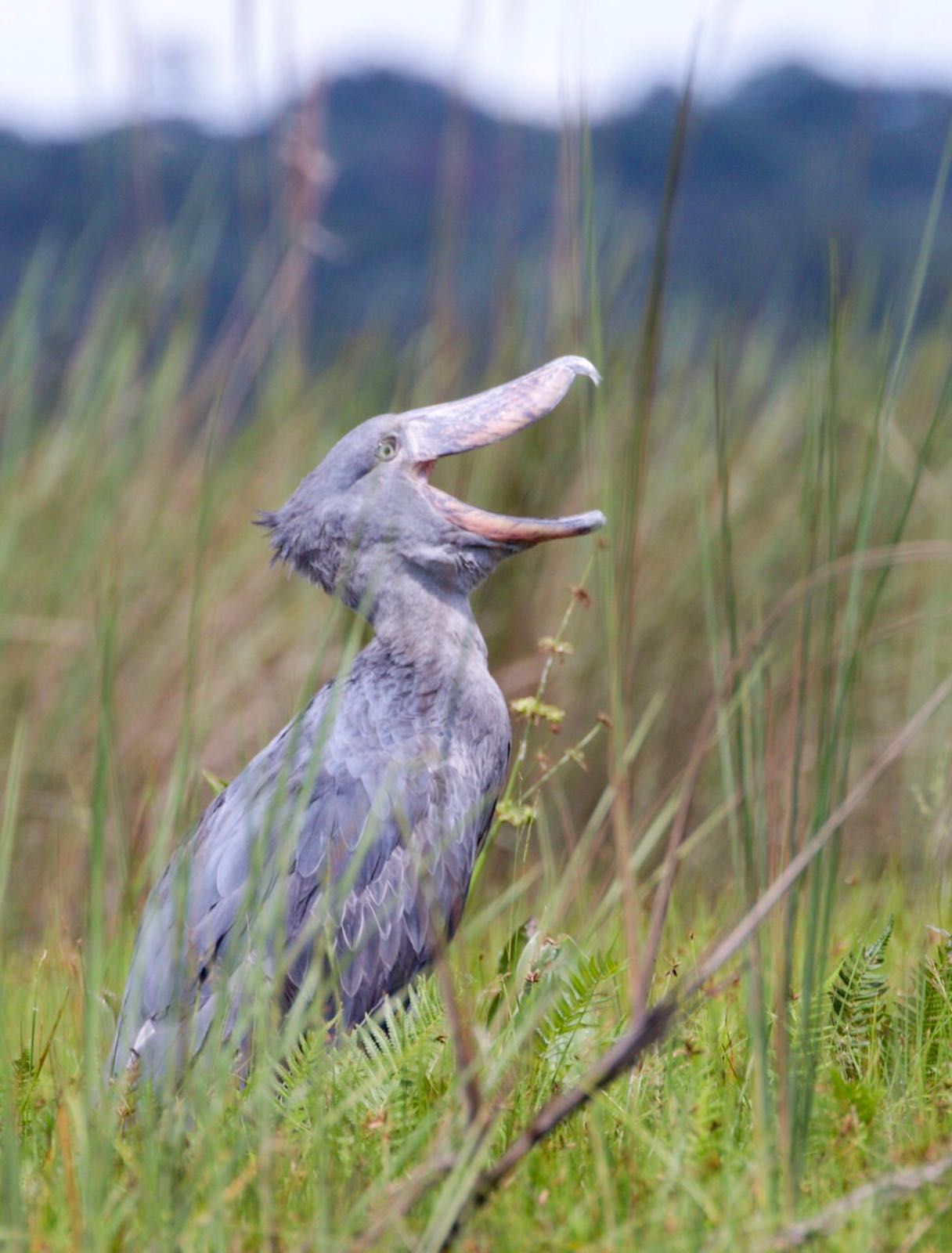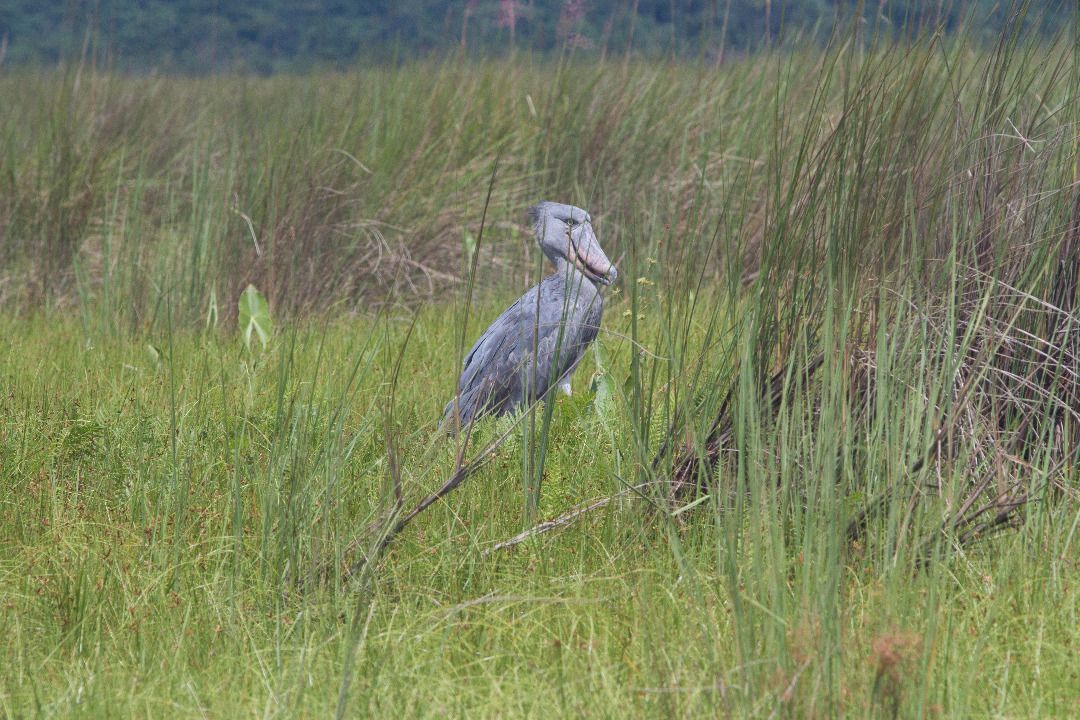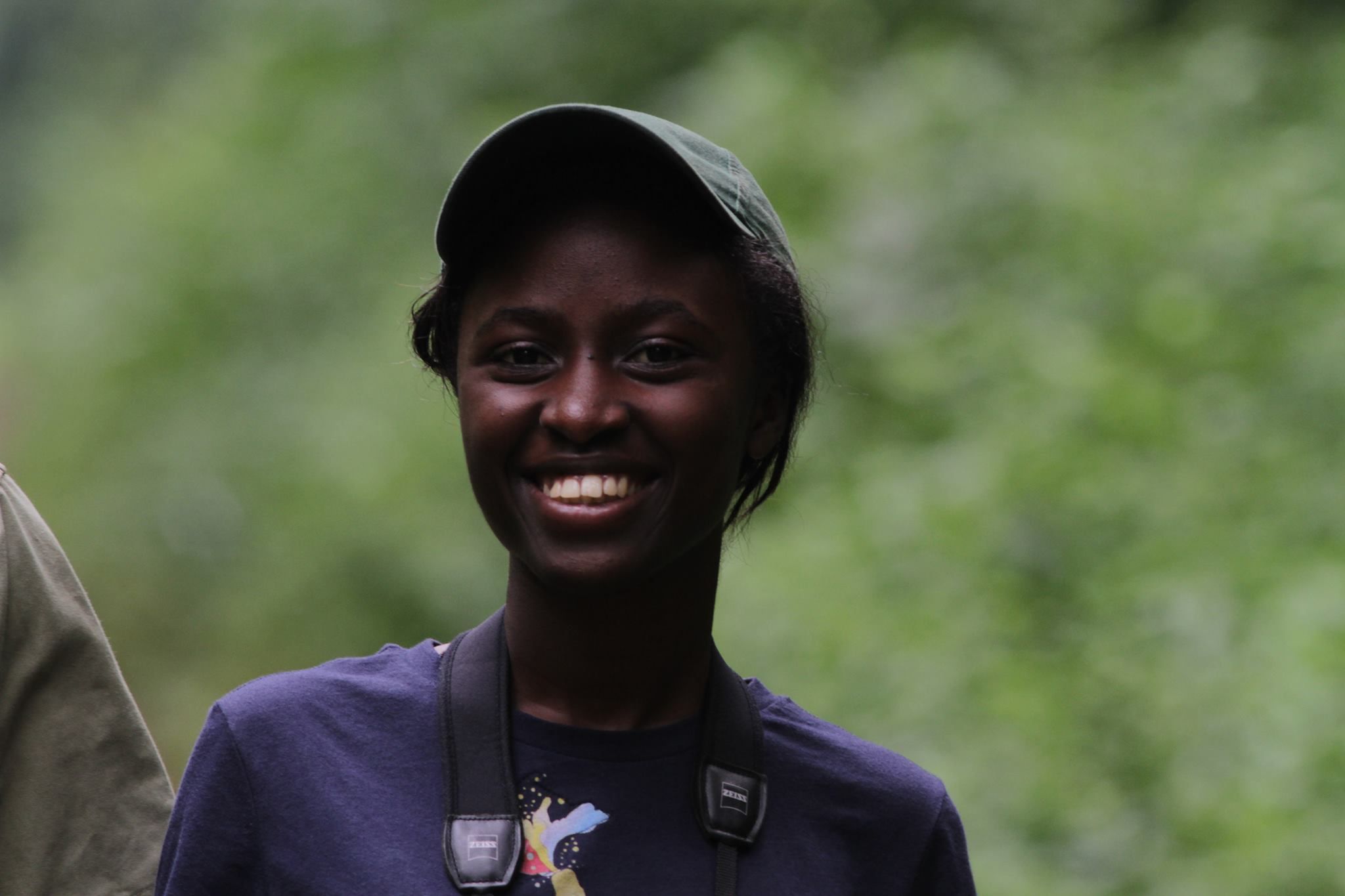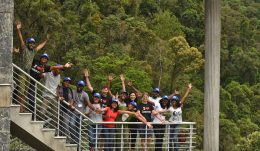Every bird watcher’s trip starts from Mabamba Swamp, one of the few remaining strongholds of the Shoebill in Uganda. The world is estimated to have 5000-8000 Shoebills remaining with an estimation of only about 150 pairs left in Uganda (NU, 2012).Mabamba Wetland was designated an Important Bird Area in2001 and a Ramsar site because of the roles it plays, among which is being a habitat for over 300 bird species, stop over for migratory birds like the globally threatened Blue Swallow. This wetland supports the livelihoods of the community through fishing, sand mining, hunting, ecotourism, and water for domestic and industrial use as well as providing other ecosystem services.

In the International Species’ Action Plan for Shoebill, community based protection at a few IBA/Ramsar Sites like Mabamba Bay is encouraged, since the locals are the custodians of the natural resources and depend on these same resources for their livelihoods and therefore are responsible for the survival of the resources. The community in Mabamba Wetland is organized under the Mabamba Wetland Eco-tourism Association (MWETA) comprising of fishermen, bird guides, huntsmen and crafts women all depending on the wetland. MWETA has been empowered by NatureUganda through a number of projects like the Local Empowerment Programme whose aim was to enable the locals conserve the biodiversity on which they highly depend for survival.

NatureUganda has also built the capacity of this community through various monitoring programmes like the bi-annual Waterbird Census (January and July). As an outcome of the long term monitoring of IBAs, MWETA developed an Action plan, the Mabamba Wetland Action Plan (2014-2018) whose main goal is “to conserve the biodiversity of Mabamba Bay through enhanced, sustainable income generation, raised community awareness and improved biodiversity monitoring.”
My project therefore comes in as a means to strengthen all the above initiatives for the Community Conservation of the Shoebill and its habitat through creating awareness on the Shoebill, developing a locally-based monitoring tool with the community that is sustainable and will be used to establish the baseline status of the Shoebill in Mabamba and the adjacent Makanaga Wetland.

I am grateful to the Segre Foundation for funding my research on one of the most sought-after birds of Uganda and a species on the verge of its extinction, the Shoebill.
– Judith Mirembe
ZSL’s EDGE of Existence Programme is kindly supported by Fondation Segré, investing in the next generation of conservation leaders.
Related blog posts

Introducing ZSL’s new Segré EDGE Fellows
ZSL’s EDGE of Existence programme is pleased to announce a new and exciting collaboration with Fondation Segré, which will support fifteen EDGE Fellowships over…